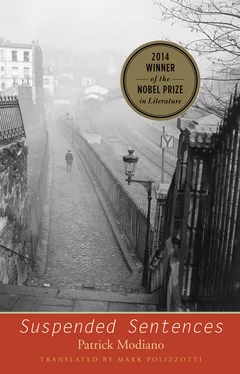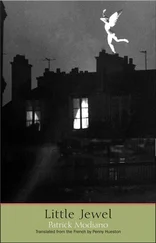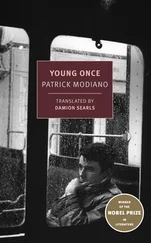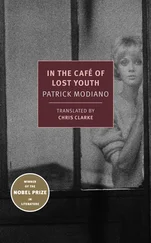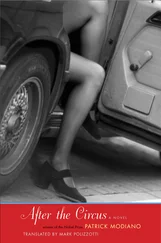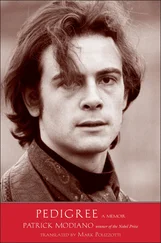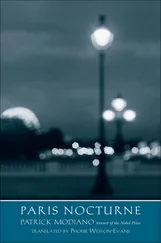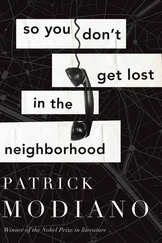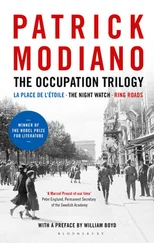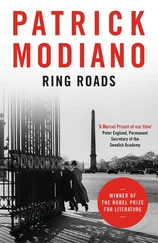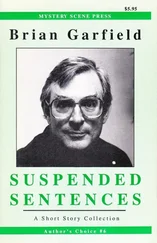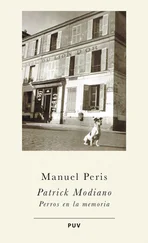Once across the Pont des Arts, I walked beneath the archway of the Louvre, another domain with which I’d long been familiar. Beneath that archway, a musty odor of mildew, urine, and rotten wood wafted from the left side of the passage, where we’d never dared venture. Light fell from a filthy, cobweb-covered window, leaving in half-shadow heaps of rubble, wooden beams, and old gardening implements. We were sure that rats were hiding in there, and we hastened our steps to emerge into the fresh air of the Louvre courtyard.
In the four corners of that courtyard, grass spurted between the loose cobblestones. There, too, were heaps of rubble, building stones, and rusty iron rods.
The Cour du Carrousel was lined with stone benches, at the foot of the palace wings that framed the two little squares. There was no one on those benches. Except for us. And sometimes a vagrant. In the middle of the first square, on a pedestal so high that you could barely make out the statue, General Lafayette vanished into the stratosphere. The pedestal was surrounded by a lawn that they never trimmed. We could play and lie around in the tall grass without a groundskeeper ever coming to reprimand us.
In the second square, among the copses, were two bronze statues side by side: Cain and Abel. The fence surrounding them dated from the Second Empire. Visitors crowded around the museum entrance, but we were the only children to frequent those abandoned squares.
The most mysterious zone stretched to the left of the Carrousel gardens along the southern wing that ends at the Pavillon de Flore. It was a wide alley, separated from the gardens by a fence and lined with streetlamps. As in the Louvre courtyard, weeds grew among the cobblestones, but most of the stones had disappeared, leaving bare patches of ground. Farther up, in the recess formed by the palace wing, was a clock. And behind that clock, the cell of the Prisoner of Zenda. No stroller in the Carrousel gardens ventured down that alley. We spent entire afternoons playing amid the broken birdbaths and statues, the stones and dead leaves. The hands of the clock never moved. They forever struck five-thirty. Those immobile hands enveloped us in a deep, soothing silence. We only had to stay in the alley and nothing would ever change.
There was a police station in the courtyard of the Louvre, on the right-hand side of the archway that led out to Rue de Rivoli. A Black Maria was parked nearby. Officers in uniform stood in front of the half-open door, through which filtered a yellow light. Under the archway, to the right, was the main entrance to the station. For me, that was the border post that truly marked the passage from the Left Bank to the Right, and I felt my pocket to make sure I was carrying my identity card.
The arcades of Rue de Rivoli, along which ran the Magasins du Louvre. Place du Palais-Royal and its metro entrance. This led to a corridor featuring, in a row, small shoeshine booths with their leather seats, and shop windows displaying junk jewelry and souvenirs. At this point, one had only to choose the journey’s end: Montmartre to the north or the affluent neighborhoods to the west.
At Lamarck-Caulaincourt, you had to take an elevator to exit the station. The elevator was the size of a cable car, and in winter, when it had snowed in Paris, you could convince yourself it was taking you to the top of a ski slope.
Once outside, you walked up a flight of steps to reach Rue Caulaincourt. At the level of the first landing, on the flank of the left-hand building, was the door to the San Cristobal.
Inside reigned the silence and half-light of a marine grotto, on July afternoons when the heat emptied the streets of Montmartre. Windows with multicolored panes projected the sun’s rays onto the white walls and dark paneling. San Cristobal … The name of an island in the Caribbean, near Barbados and Jamaica? Montmartre, too, is an island that I haven’t seen in about fifteen years. I’ve left it behind me, intact, in the blue of time … Nothing has changed: the smell of fresh paint from the walls, and Rue de l’Orient, which will always remind me of the sloping streets of Sidi-Bou-Saïd.
It was with the Danish girl, the evening I ran away from school, that I went for the first time to the San Cristobal. We were sitting at a table in back, near the stained-glass windows.
“What will you have, old top?”
Over dinner, I tried talking to her about my future. Now that they’d no longer want me at school, could I still continue my studies? Or would I now have to find a job?
“Tomorrow is another day … Have some dessert.”
She didn’t seem to register the gravity of the situation. A tall blond fellow wearing a glen plaid suit came into the San Cristobal and headed for our table.
“Hiya, Tony.”
“Hi.”
She seemed delighted to see him. Her face lit up. He sat down next to us.
“Let me introduce you to a friend who was all alone this evening,” she said, pointing to me. “So I decided to take him to dinner.”
“Well done.”
He smiled at me.
“Does the young gentleman work in music?”
“No, no …” she said. “He ran away from school.”
He knitted his brow.
“That’s a bit awkward … Doesn’t he have any parents?”
“They’re traveling,” I stammered.
“Tony is going to call your school,” said the Danish girl. “He’ll tell them he’s your father and that you’re safely back home.”
“You really think that’s a good idea?” asked Tony.
He gently rolled the end of his cigarette along the edge of the ashtray.
“Go do it, Tony.”
She had taken an imperious tone and was threatening him with a wagging index finger.
“Okay …”
It was she who called information for the school’s telephone number, which she jotted down on a scrap of paper.
“Your turn now, Tony …”
“If you insist.”
He stood up and, with a casual gait, walked toward the phone booth.
“You’ll see … Tony will fix everything …”
After a moment, he reappeared at our table.
“Uh, well … They said my son had been expelled and that I have to go pick up his things before the end of the week …”
He shrugged, looking apologetic. I must suddenly have turned very pale. He laid his hand on my shoulder.
“Don’t worry … They can’t bother you anymore … I told them you were home safe and sound.”
The three of us found ourselves on Rue Caulaincourt.
“I won’t be able to come to the movies with you,” the Danish girl said to me. “I have to spend a little time with Tony …”
She had planned to take me to the Gaumont-Palace to see Solomon and Sheba . She dug into her pocket and handed me a ten-franc bill.
“You’ll go to the Gaumont on your own, like a grown-up … And afterward, you’ll take the metro and come back to sleep at my house … Take the line that goes to Porte Dauphine and change at Etoile … Then the line to Nation and get off at Trocadéro.”
She gave me a smile. He shook my hand. The two of them got into his blue car, which disappeared around the first corner.
I didn’t go to the movies that evening. I walked around the neighborhood. Heading up Rue Junot, I came to the Château des Brouillards. I was sure that one day I would live around there.
I remember a car ride, five years later, from Pigalle to the Champs-Elysées. I had gone to see Claude Bernard in his bookstore on Avenue de Clichy and he offered to take me to the movies to see Lola or Adieu Philippine , which I remember fondly … It seems to me that the clouds, sun, and shadows of my twentieth year miraculously live on in those films. Normally we only spoke about books and movies, but that evening I alluded to my father and his misadventures under the Occupation: the warehouse on the Quai de la Gare, Pagnon, the Rue Lauriston gang … He looked over at me.
Читать дальше
